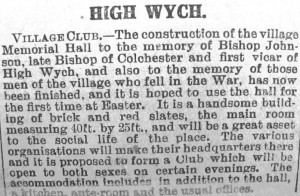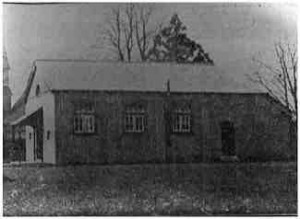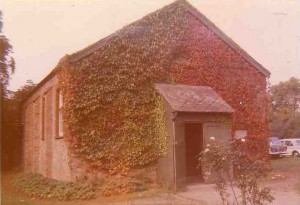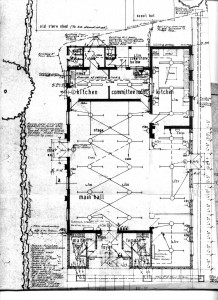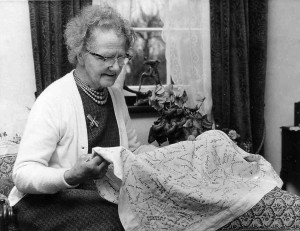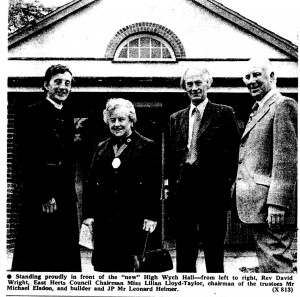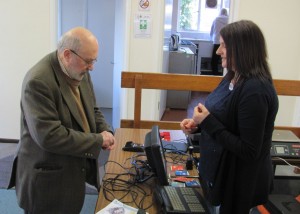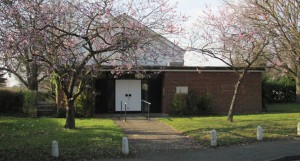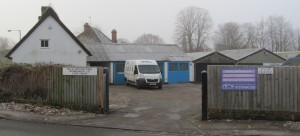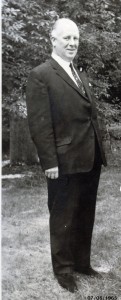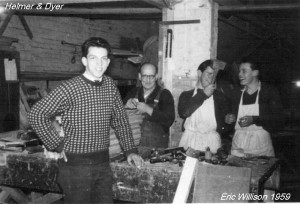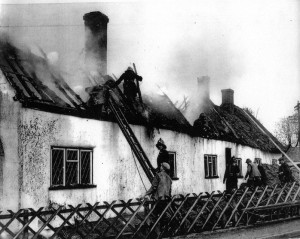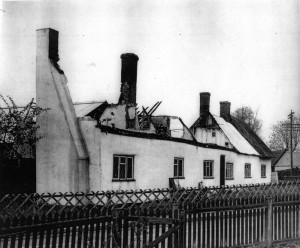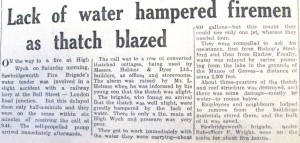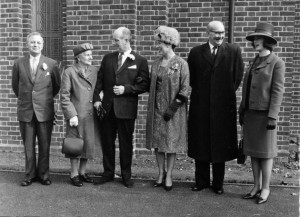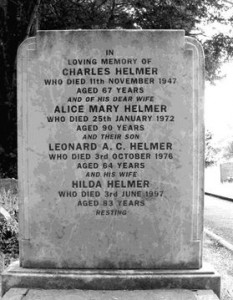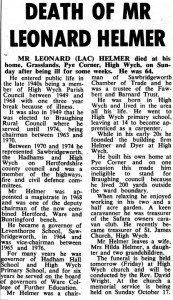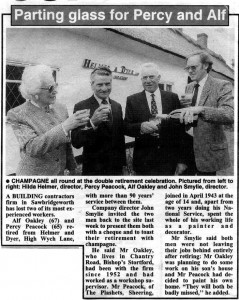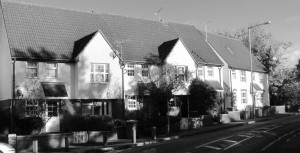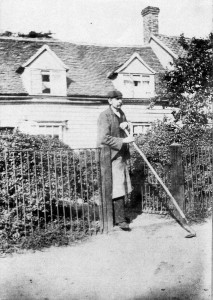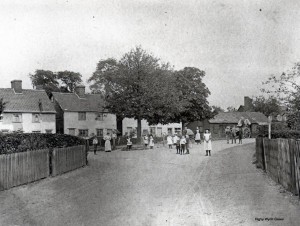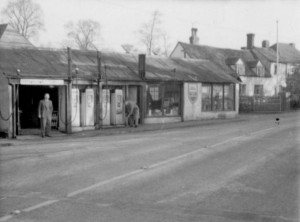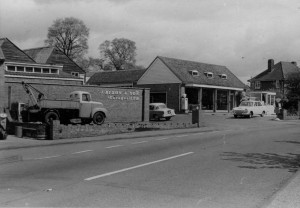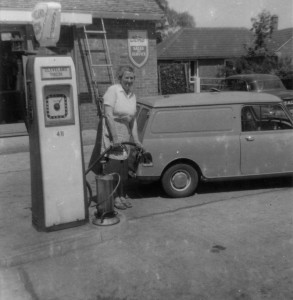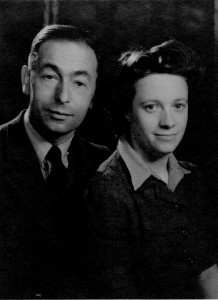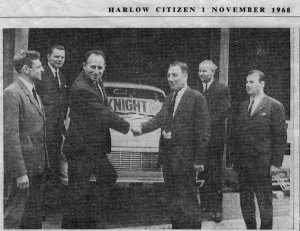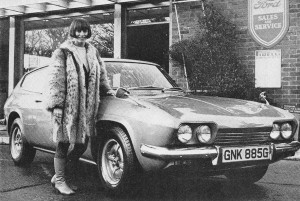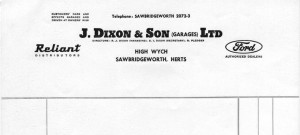Our Village Hall dates from 1923 but the idea of building came about much earlier. Sometime after the death in 1908 of Bishop Johnson, first vicar of High Wych, it was suggested a village hall should be built dedicated to his memory. The first mention I found of those plans date from January 1912. See below. Five months later, on 22nd June, the Essex Newsman reported on another fundraiser: a garden fete and bazar held at the Manor of Groves. Under auspices of Mr. Frederick Silva, then resident there, the event was opened by Johnson;s successor as bishop of Colchester, the right rev. R.H. Whitcombe. The band of the Essex Yeomanry lent jollification and “a considerable sum was raised”
Fundraising continued but the Great War intervened. In November 1922 however, local landowner Arthur Salvin Bowlby donated a plot of land adjacent to the Churchyard with a view of erecting a village hall. Henry Fowell Buxton, a brewer who then lived at the Manor of Groves, Horace Fuller Rackham, the vicar and Bowlby himself signed the deed of gift. They also became the first trustees. The Hall was to be dedicated to the memory of Bishop Johnson of Colchester, first High Wych vicar and to those who lost their lives in the Great War. The deed stipulated the Hall was to be used “for the purposes of physical and mental recreations and for holding meetings in connection with religious and philanthropic objects”. How to interpret this was left to the trustees but it was also said that “the premises shall at no time be used for revolutionary propaganda.”
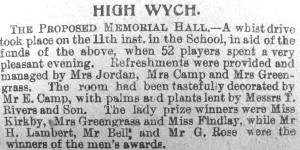 Work started quickly and after only four months the Hall was finished. An article in the Herts and Essex Observer at the time described it as “a handsome building of brick and red slates”. It becomes a meeting place for High Wych Village Club, the Parish Council, ,the Women’s Institute, the Men’s Club, the Scouts and Cubs, the Hockey Club, the Girl Guides and the Brownies. Naturally villagers are as proud as punch of their new hall and the local paper mentions many occasions of its use. In 1923 only the Herts and Essex Observer of 1923 mentions our new hall several times. A whist drive in April of that year is the first example I found. Some seventy people took part and raised funds so that a piano could be bought. On 17th November it is reported that that H.F. Buxton (another new resident at the Manor of Groves) donated a billiard table to the newly formed men’s club.
Work started quickly and after only four months the Hall was finished. An article in the Herts and Essex Observer at the time described it as “a handsome building of brick and red slates”. It becomes a meeting place for High Wych Village Club, the Parish Council, ,the Women’s Institute, the Men’s Club, the Scouts and Cubs, the Hockey Club, the Girl Guides and the Brownies. Naturally villagers are as proud as punch of their new hall and the local paper mentions many occasions of its use. In 1923 only the Herts and Essex Observer of 1923 mentions our new hall several times. A whist drive in April of that year is the first example I found. Some seventy people took part and raised funds so that a piano could be bought. On 17th November it is reported that that H.F. Buxton (another new resident at the Manor of Groves) donated a billiard table to the newly formed men’s club.
As the twenties roll into the thirties, forties, fifties and onwards, the Hall continues to be a focal point of village life. The Hockey Club and Cricket Club organize dances. The WI organizes its monthly meetings. The Hall was also used as a canteen for the children of High Wych School. Until the early seventies school dinners were prepared in the kitchen and served in the Hall itself. Those who were there remember hard folding chairs and splinters in backsides!
During the Second World War, High Wych Memorial Hall provided services for the women working in the Land Army. Dinners were often prepared and served for them there. Whist drives were organized as well as dances when locals and visiting members of the armed services jitterbugged to the music of Jay Dimmock and his band, a 5 piece combo from Hoddesdon. Some twenty years later that same Jay Dimmock gave a teenage Cliff Richard his first chance to sing. That happened in Cheshunt though, not High Wych!
The post war years are mainly remembered for two people : Arthur Clow and Michael Elsdon. Arthur Clow who served from 1939 until 1969, was caretaker, treasurer, booking secretary and secretary rolled into one. Those who wanted to hire the hall went to see him, paid the money, got the keys and got on with it. Mike Elsdon, a young mechanical engineer who worked at Holbrooks came to High Wych in 1940. Immediately he became involved in local affairs including the Village Hall. In 69 Len Helmer (yes him again) proposed Mike Elsdon become chairman and the Hall Committee was put on a more formal footing. Most importantly preparations were started for an extension of the Hall. Mr Bob Springham, a young local architect, offered his services and produced the necessary drawings and a model. All that was needed now was the money!!!
High Wych Memorial Hall in 1965 One of Bob Springham’s sketches for the new Hall
Over the next months and years Mike Elsdon leads his committee in a frenzy of fundraising and discussions on planning and finance. Some of you may recall an embroidered picture in the Hall (made by committee member Grace Dunn) showing the signatures of people who donated money to the project. Our one hundred club was also started around that time. In the end total costs of the project came close to £ 20.000, a big sum for those days. Luckily some financial assistance was provided by the local council. By the summer of 1973 a formal dedication ceremony was held. See copied article from the Herts & Essex Observer on the facing page.
1970: Grace Dunn does her embroidery 1973 – The New Hall is revealed
In 1972 Jack Balaam joined the Hall Committee. Whilst he was not in the same vein as Arthur Clow, he did for many years serve as the first point of call for those wanting to hire the Hall. Jack, who served as both treasurer and booking secretary was on the committee for many years until his untimely death in 1991. Many still remember him with admiration and affection. Mike Elsdon stayed on as chairman until 1976 when he was succeeded by L.J. Hibbs who was followed by Charles Wentworth Stanley who served until the early nineties when the author of this article (who he?) took over. Through all those years, in fact until 1995, Mike Elsdon stayed on the committee giving us the benefit of his experience.
It was during my own term of office, which lasted until the late nineties, that Pam and Bob Giles joined the Hall Committee. It is surely safe to say that Pam and Bob are now as closely associated with High Wych Memorial Hall as Arthur Clow and Jack Balaam once were. Meanwhile, Mandy Reynolds took over from yours truly as Committee Chair. She was followed by Paul Stephenson who has now been at the reins for some six years.
 The 21st Century – A Muslim Wedding at High Wych Memorial Hall
The 21st Century – A Muslim Wedding at High Wych Memorial Hall
Monday 24th February 2014 Councillor David Saunders buys stamps at the newly opened HWMH post offfice
Through all those years the Hall has continued to play an important role in HW village life. Activities include Karate, Scottish Dancing and Tai Chi. The Women’s Institute and the Ladies group continue to use the Hall whilst recently a weekly Internet Café was started. Finally, from Monday 24th February the Hall will host an outreach post office.
Yes, times have moved on. High Wych has changed from little more than a hamlet to something approaching suburbia, regrettable that may be but that is life! And what do I personally recall most from my time on the Hall Committee? It was an occasion when we were trying to stamp out commercial hirings, that is to say prevent the Hall being hired for “private parties”, which were but a cover for profit making ventures. When questioned, a culprit claimed their party was held “to celebrate our aunt’s successful hysterectomy operation”
Those who want to know more, or even book the Hall can visit highwychmemorialhall.com
Information for this article mainly comes from my own “short and incomplete history of High Wych Memorial Hall” Two pictures were lifted from the Hall website.
The Hall as it is today


